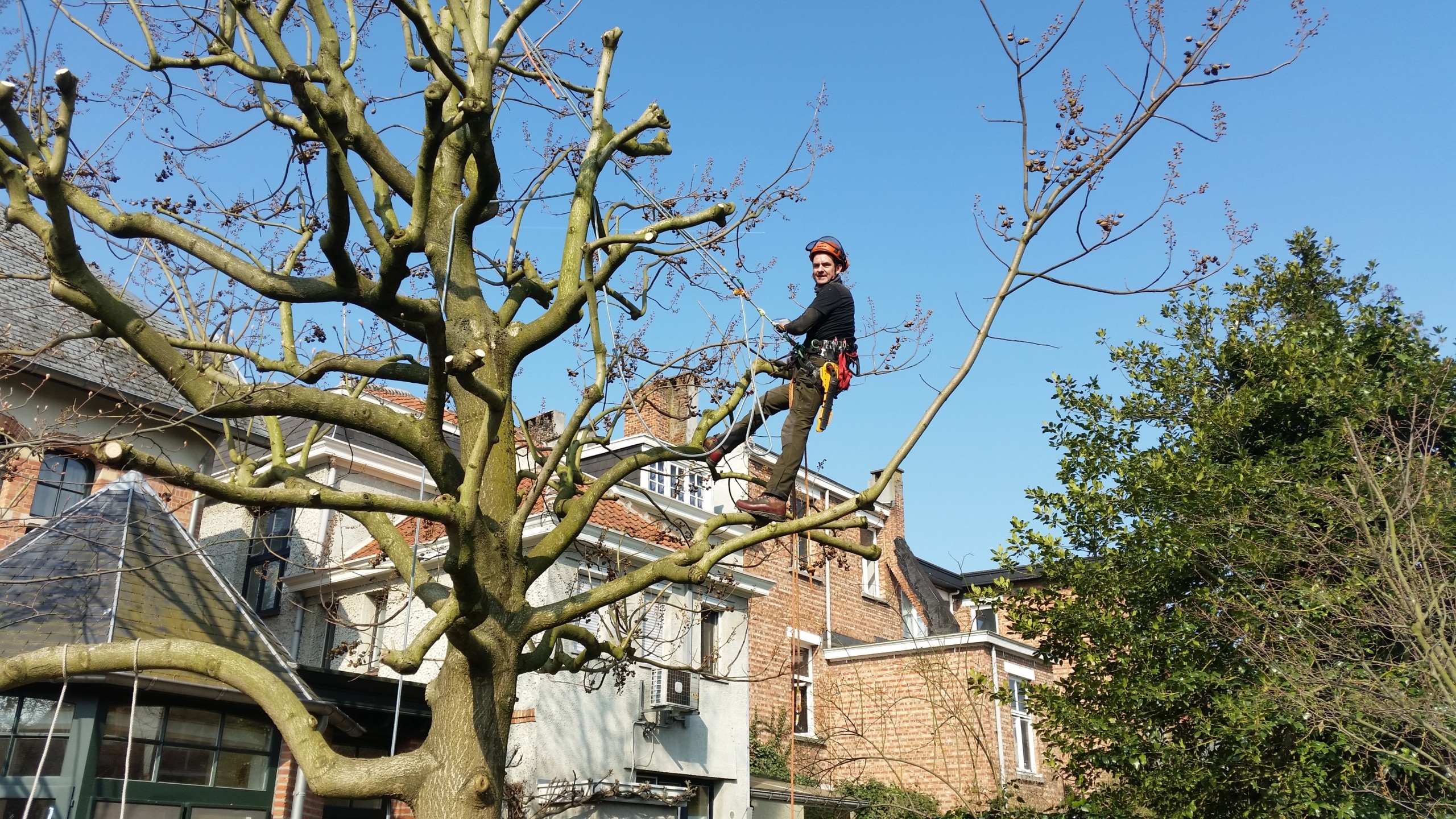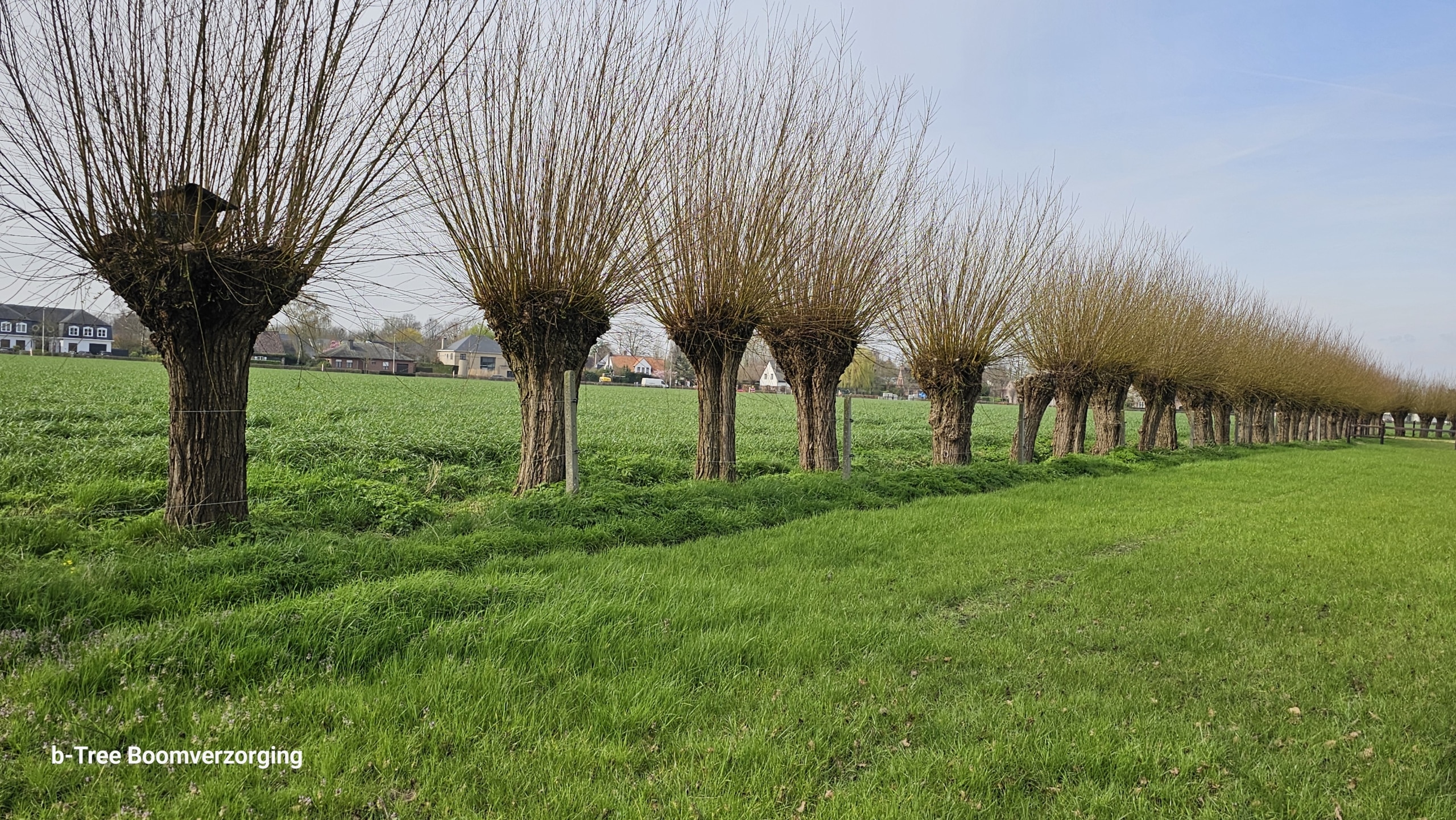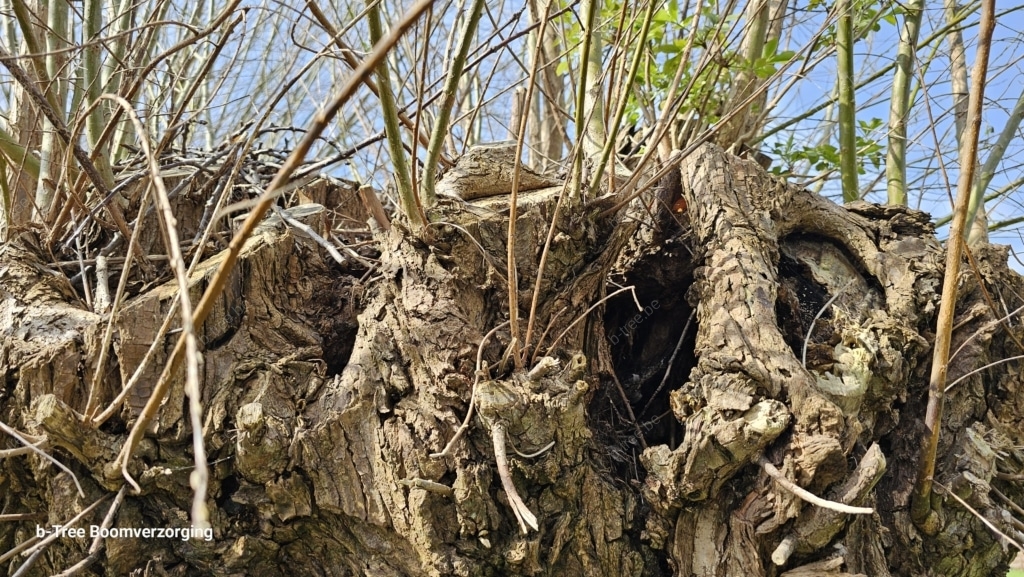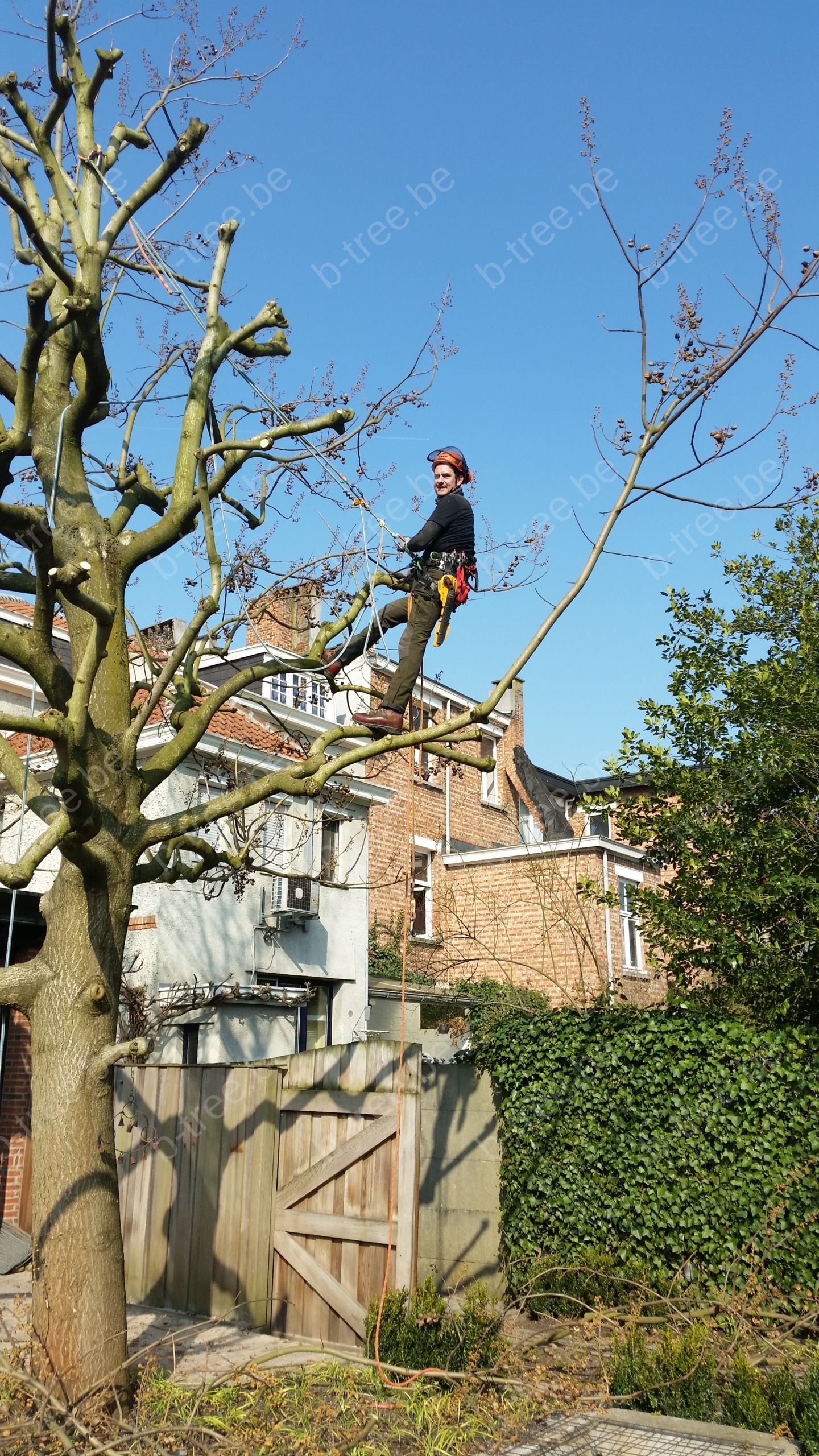Pollarding trees. How do you proceed?
Pollarding trees and a practical guide to maintenance of pollarded trees
Pollarding trees is an age-old practice that is still used to manage and preserve trees.
This technique involves removing the top branches or the entire top crown of the tree. As a result, the crown only gets a characteristic 'knot' or 'knot'. With fairly upright new branches on top.
In this guide we explain how, why and when knotting and re-knotting take place.
How to pollard trees?
How do you go about re-polluting trees?
Tree pollarding is a skilled and careful type of pruning, which is usually carried out by experienced people tree caretakers or arborists.
Pollarding or re-knotting usually involves the following steps:
Evaluation
First, you conduct a thorough evaluation of the tree. To determine whether it is suitable for knotting. The health of the tree, the species and the location play a role in this. Only healthy trees with good condition and vitality are suitable for pollarding and re-polluting.
Selection of the branches
You must carefully select the branches that you are going to pollard, if the tree has never been pollarded before. These may be the top branches or branches that grow too close to buildings or power lines. Trees that you re-prune should always be pruned back to the existing knot.
Pruning
Using special tools such as a handsaw, chainsaw and pruning shears, remove the selected branches. Always as close as possible to a branch or trunk. And you saw just next to the branch collar, but never into the branch collar. This pruning work must be carried out with precision to avoid damage to the tree.
Maintenance
Regular maintenance is important in the years after the tree has been pollarded. This includes removing any new growth that forms under the pollards, removing dead branches and monitoring the health of the tree. You are only allowed to re-knot four to five years later. Otherwise the tree will weaken too much.

Detail of pollarding a tree (willow) and pruning the branches on top of the knot.
Why pollard trees?
Tree pollarding has several important purposes and advantages, but it also has disadvantages:
Safety
Pollarding trees can prevent dangerous situations, especially when trees grow too close to buildings or infrastructure. Removing branches reduces the risk of property damage and injury.
Conservation of trees
Pollarding can extend the life of a tree and limit its risks. Removing weakened or dead branches or trunk parts can reduce the risk of complete failure (breaking). This means that the tree can be retained in its knotted shape for a long time.
Scenic, ecological and heritage value
Pollarded trees often arose historically because of the use of the twigs or coppice they produce. And often give a unique aesthetic and characteristic appearance to the landscape. They also provide habitat for bats, insects and fungi. As a result, pollarded trees have an important value in various areas.
Wood production
In some cases, pollarding is used to promote wood production. Pollarded trees can be regularly harvested for firewood or other wood products.
Only place trees in knot management if there is no other option
It is often better not to put street trees and avenue trees under poll management. Because the maintenance costs increase enormously over the years, compared to regular maintenance pruning. A healthy tree that does not pose a safety risk can simply be allowed to grow if there is room for it. So you don't have to put it in knot management.
When is tree pollarding necessary?
The right time to pollard trees varies depending on the tree species and the purpose of the pollarding. In general, the following guidelines apply:
You do pollarding in the winter
You do pollarding of trees in the winter. Because then you stimulate more dormant buds and adventitious buds. So that the tree has more twigs the next growing season and the tree grows better again photosynthesis can do and rebuild energy.
Pollarding young trees
You can pollard young trees at an early stage of the tree's life to develop a desired shape. You can repeat this every few years to achieve the desired structure.
Mature trees
Pollarding of mature trees should be avoided as much as possible. Unless you have no other option.
Mature trees already have thick branches and pruning thick branches is bad for the condition of the tree. Because if you prune thick branches, the risk of infection is greater. And this is because the sealing is worse than with smaller branches.
Dead or weakened branches
It is best to remove dead or weakened branches if they pose a safety risk.
Trees should only be re-polluted every four to five years
If a tree is in pollard management, you are not allowed to re-pollute it every year.
Because after pollarding, the tree needs a lot of energy to recover. Seal its wounds and create new branches (twigs in this case) by the next growing season. And because it takes four to five years before the tree returns to its original energy level after pollarding.
If you start pollarding every year or every two years, the energy level will drop deeper and deeper. So that the tree has a much greater chance of damage and rot.
Which in turn can lead to the loss of the tree.
Pollarding of specific tree species
Tree pollarding can be applied to different tree species. But some species are better suited to it than others. Here are some examples of tree species that are commonly pollarded:
1. Willows (Salix): Willows are well-known candidates for pollarding because of their rapid growth and flexible branches. Willows are often pollarded for timber production, such as obtaining willow wicker for wickerwork.
2. Oak (Quercus): Oaks can be pollarded for timber production or conservation purposes. Pollarding oaks can extend their lifespan and maintain their majestic appearance.
3. Maples (Acer): In some cases, maples are pruned to manage their shape and size, especially when close to buildings.
4. Alder (Alnus): Alder is often pollarded for timber production, especially for firewood.
5. Poplars (Populus): poplars are a common choice for pollarding due to their rapid growth and use of the wood for various purposes.
6. Linden (Tilia): this is a frequently pollarded species, which is also often managed as a combination of espalier and pollarded tree. They then act as a green screen that takes up relatively little volume, but the trees still represent a considerable height.
Professional arborist for tree pollarding
Tree pollarding is a delicate task that requires careful planning and execution. It is highly recommended that you hire a professional arborist such as b-Tree. Not only to assess and carry out the work correctly, but because we can also carry it out safely. Because if you prune long branches when pruning, you must guide them properly and saw them correctly so that they do not cause any damage. Or falling against your body or ladder.
As professionals, we have the expertise and experience to determine whether bundling is necessary. Which branches to pollard and how to do this safely and effectively.
Tree pollarding can be a practical solution for tree conservation and safety. As an aesthetic addition to your landscape.
With the right approach and careful maintenance you can enjoy the benefits of pollarded trees. And contribute to sustainability tree management and the preservation of green spaces.
contact us without obligation.





